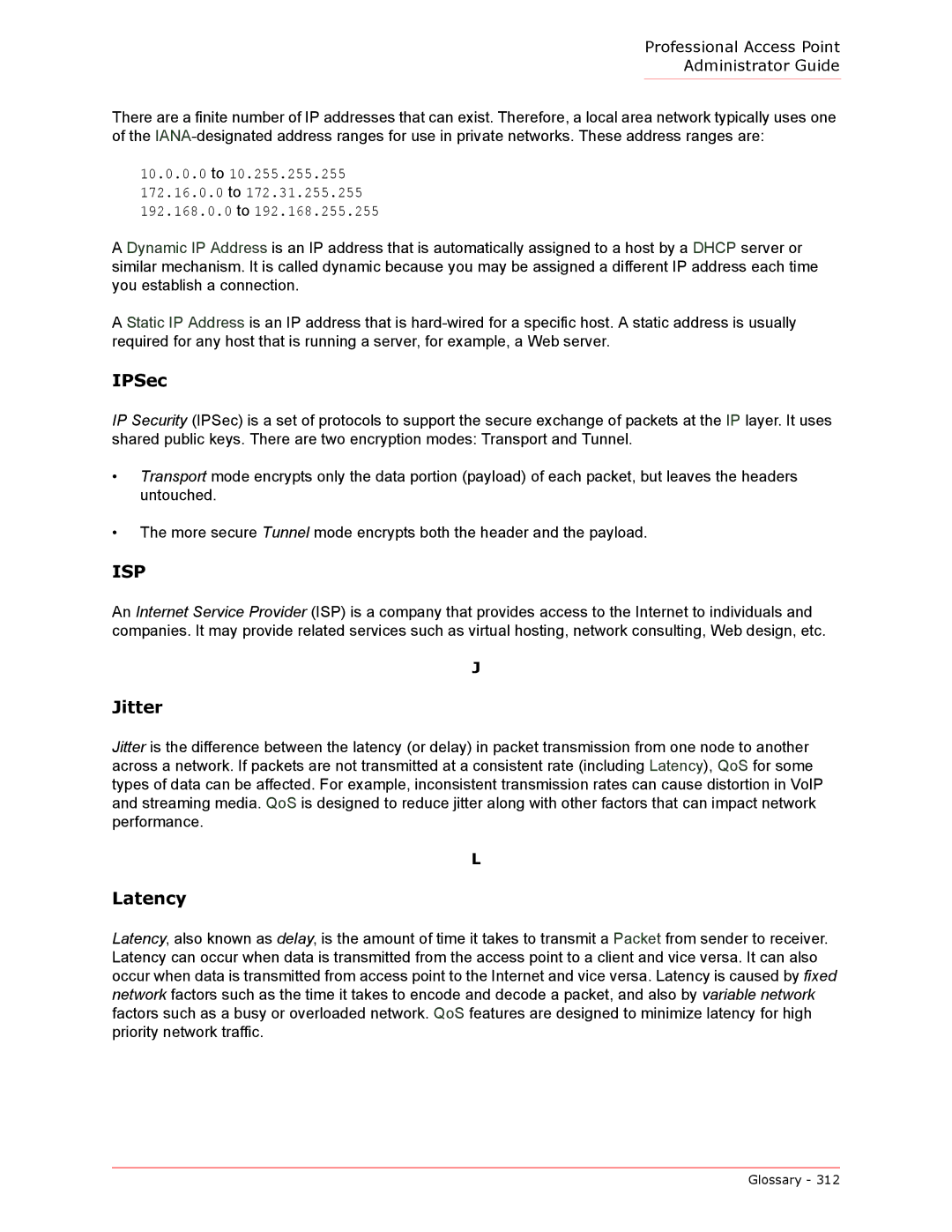
Professional Access Point
Administrator Guide
There are a finite number of IP addresses that can exist. Therefore, a local area network typically uses one of the
10.0.0.0to 10.255.255.255
172.16.0.0to 172.31.255.255
192.168.0.0 to 192.168.255.255
A Dynamic IP Address is an IP address that is automatically assigned to a host by a DHCP server or similar mechanism. It is called dynamic because you may be assigned a different IP address each time you establish a connection.
A Static IP Address is an IP address that is
IPSec
IP Security (IPSec) is a set of protocols to support the secure exchange of packets at the IP layer. It uses shared public keys. There are two encryption modes: Transport and Tunnel.
•Transport mode encrypts only the data portion (payload) of each packet, but leaves the headers untouched.
•The more secure Tunnel mode encrypts both the header and the payload.
ISP
An Internet Service Provider (ISP) is a company that provides access to the Internet to individuals and companies. It may provide related services such as virtual hosting, network consulting, Web design, etc.
J
Jitter
Jitter is the difference between the latency (or delay) in packet transmission from one node to another across a network. If packets are not transmitted at a consistent rate (including Latency), QoS for some types of data can be affected. For example, inconsistent transmission rates can cause distortion in VoIP and streaming media. QoS is designed to reduce jitter along with other factors that can impact network performance.
L
Latency
Latency, also known as delay, is the amount of time it takes to transmit a Packet from sender to receiver. Latency can occur when data is transmitted from the access point to a client and vice versa. It can also occur when data is transmitted from access point to the Internet and vice versa. Latency is caused by fixed network factors such as the time it takes to encode and decode a packet, and also by variable network factors such as a busy or overloaded network. QoS features are designed to minimize latency for high priority network traffic.
Glossary - 312
